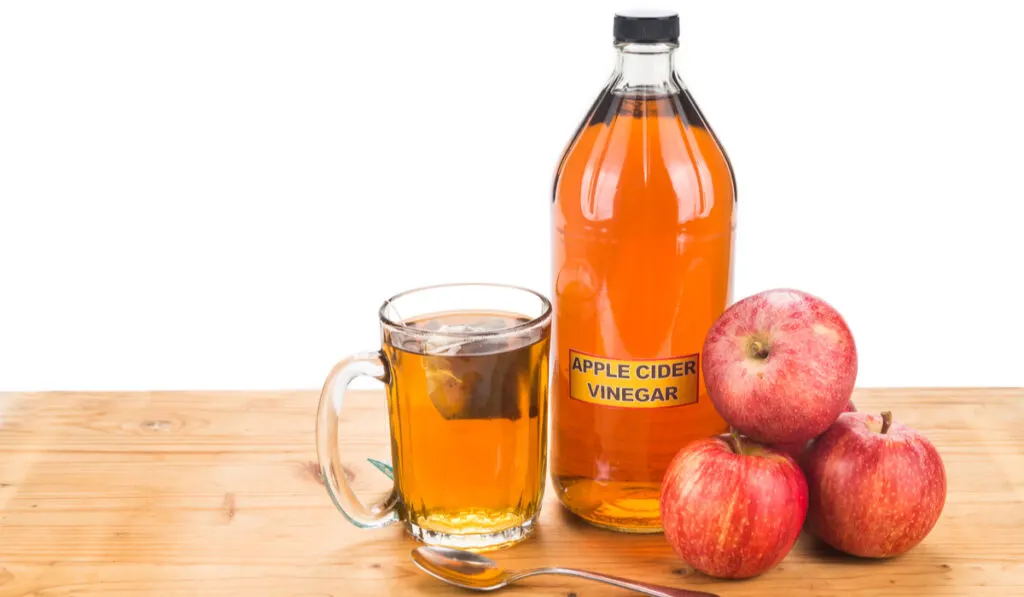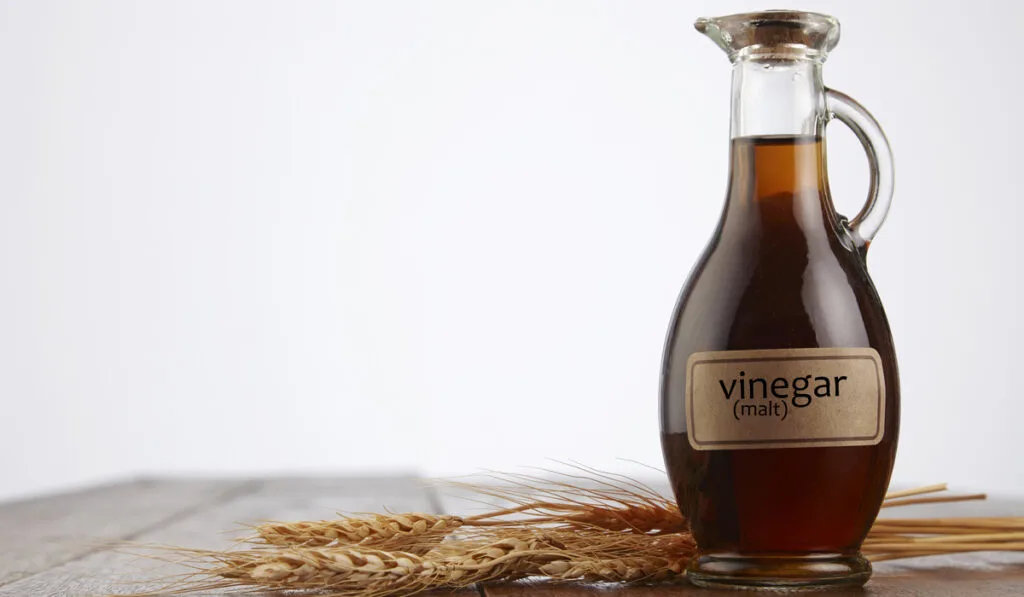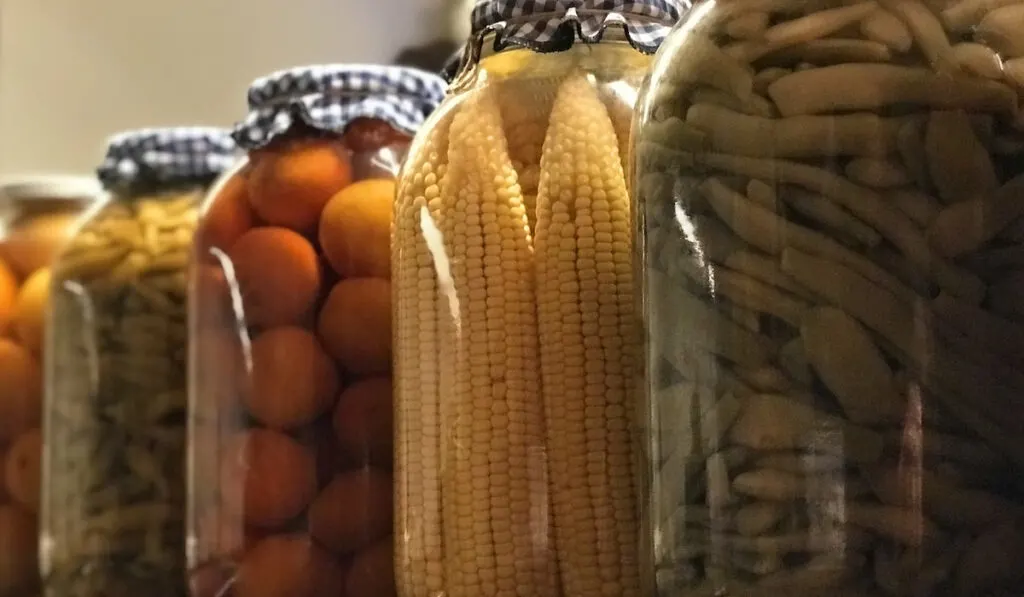Pickled foods are used for extra side dishes, toppings, or even additional items that enhance the texture and under-taste of the foods they’re served with. In fact, creating pickles or pickling itself is more than a just culinary skill; it is an art. The process of producing pickled food is known as brining.
There are two different methods that are primarily used for pickling: vinegar pickling and salt pickling. Salt pickling is a thorough process where canning salt, kosher salt, or pure granulated salt is used to preserve the food. But vinegar pickling is much more simple. You only need salt, water, and vinegar.
Vinegar-based pickling is also a quicker process compared to other methods.
But what types of vinegar should you use? Which kind yields the best pickles and is able to retain the flavor for a longer period of time? Here are some of the answers.
Table of Contents
What Is The Best Acidity of Pickling Vinegar?
Choosing the right concentration or acidity level of the vinegar is important to properly preserve pickles.
For this, you should choose vinegar with at least 5% acidity.
5% acidity is related to the specific amount of acetic acid in that vinegar. So, the higher the acidity, the higher the volume or the amount of acetic acid presents in that vinegar.
Although most commercial vinegars are 5% acid, some are lower due to the amount of water contained in the pickle.
Most vegetables, fruits, fish, and meats contain water that will slowly dilute the vinegar. This issue can be avoided if you’re using strong or concentrated vinegar in the first place.
But if you choose to go with weaker vinegar, this dilution will lower the acidity and affect the overall taste and texture of the pickles.
Most vinegar manufacturers will list all the ingredients including acidity level on the label of the bottle. So, be sure to check for this information before making a purchase.
Types Of Pickling Vinegar
There are a few types of vinegar that can be used for pickling.
Apple Cider Vinegar
This vinegar is produced from a combination of apples and yeast. The fermentation process happens when yeast turns the sugar from the apples into alcohol.
Then, beneficial bacteria are added to further ferment the alcohol and turn it into acetic acid. In turn, this gives the vinegar a strong sour smell and taste.
Although apple cider vinegar doesn’t offer a lot of nutrition, it contains potassium, amino acids, and some antioxidants. Most commercially-produced apple cider vinegars have between 5 and 6% acetic acid.

Balsamic Vinegar
Aside from pickling, balsamic vinegar is widely used for salad dressings, marinade, and other cooking purposes.
It has a deep brown texture with a distinctive, bold, and tart-like aftertaste. Balsamic vinegar originated in Italy and is made from unfermented grape juice. It contains acetic acid, antioxidants, and microbial compounds.
Balsamic vinegar also helps in reducing blood sugar levels, lowering cholesterol, aids in digestion, improving skin health, and reducing the risk of hypertension.
Genuine balsamic vinegar is kept in a barrel for months or even years. This reason alone makes it quite expensive compared to other vinegar.
If you intend to use balsamic vinegar for pickling, you can mix it with white vinegar to reduce the cost while keeping the acidity at an optimum level. Most balsamic vinegars contain between 5 to 6% acetic acid.
Distilled White Vinegar
Distilled white is produced from a grain-alcohol mixture where oxygen is fed to induce the growth of bacteria, leading to the formation of acetic acid. This vinegar has around 5% acetic acid with a milder taste that won’t affect the overall flavor of your pickles.
Distilled white vinegar is also clear and doesn’t change the texture or color of the pickles. There are many things that you can use to produce this vinegar including malt, instant rice, dates, raisins, kombucha, coconut, and many more.
Aside from pickling, you can use distilled white vinegar for salad dressings, marinades, poaching eggs, cooking rice, and even baking.
Malt Vinegar

Malt vinegar is produced from malted barley. These germinated and dried grains of barley will give a slightly deep, nutty, and toasty flavor to the overall taste of this vinegar. They are made through a double fermentation process, in which grains of barleys are malted and turn into ale.
During the fermentation process, the bacteria will break down the ethanol to create acetic acid, minerals, and other additional vitamins.
Its dark brown color will affect the color of vegetables of pickles stored in it. However, there are some distilled varieties that have clear and clean textures.
Wine Vinegar
Like its name, this vinegar is made from either white or red wine. White wine vinegar contains around 5 to 7% acetic acid, which is a good choice for pickling. It is made from fermented or oxidized white wine that gives off a slightly fruity flavor. It also tastes lighter and not too sour or too sweet.
Red wine is produced through the same process using red wine. Aside from its reddish or pinkish hue, red wine vinegar tastes stronger with a more vibrant grape flavor.
There is no right or wrong choice for these two. You can choose either one or use both to create a combination of unique flavors in your pickles. But be sure to check for the acidity and never go for the ones that are lower than 5%.

Vinegars Not to Use for Pickling
On the other hand, try not to use flavored vinegars such as raspberry vinegar, blueberry vinegar, salad vinegar, and others.
Most flavored vinegars contain acidity that is less than 5%. So, they aren’t suitable for pickling but still can be used for salad dressings or roasting vegetables.
Final Thoughts
Pickles can be used on many different kinds of food including burgers, tacos, salads, sandwiches, and other delicious treats. And to produce the best pickles, you have to choose the best vinegar.
The main takeaway from this article that you should remember is that when pickling, you need an acidity level of at least 5%.
Pickling vinegar is totally different from any regular vinegar. Although they may seem similar, non-pickling vinegars just won’t yield the same result.
Resources
- https://www.thekitchn.com/pickling-choosing-a-vinegar-61428
- https://preserveandpickle.com/best-vinegar-for-pickling/
- https://survivalfreedom.com/best-vinegar-for-pickling-every-type-compared/
- https://www.seedtopantry.com/2015/08/15/which-vinegar-to-use-when-pickling/
- https://www.foodandwine.com/vegetables/pickled-vegetables/science-vinegar-pickles-explained
- https://www.sciencedirect.com/topics/food-science/pickling
